|
The Roman civilization began around 753 B.C. with the founding of Rome by the
legendary king Romulus. Rome would grow to become the most powerful empire in
the ancient world, engulfing most of the lands surrounding the Mediterranean
Sea. Roman law and justice was spread with each military victory. The ideas
within Roman law still influence our justice system today. Latin, the
language of the ancient Romans, forms the foundation of many modern European
"Romance" languages.
Click to enlarge images.
The Legend
1
Romulus and Remus: These are the
legendary twins that founded the city of Rome. According to legend they were
rescued from the Tiber River by a she-wolf.
The Etruscans
Etruscan kings controlled Rome for
close to 70 years. Under these rulers, the Romans developed an alphabet, and
learned how to use the arch in building design.
2
This is an Etruscan couple relaxing.
The Republic
Once the Etruscans were overthrown,
Roman leaders set up a new form of government called a republic, where citizens
elect their leaders. There were two classes of citizens, PATRICIANS and
PLEBEIANS. Patricians came from wealthy families, while Patricians formed the
bulk of society, craftspeople, peasants, etc..
3
This is the Forum, a place where the
business of the Republic could be discussed. The laws of the Roman republic,
"the Twelve Tables", were displayed in the Forum.
The End of the Republic &
The Beginning of the Empire
The people of Rome gradually
respected their leaders less and less due to corruption and other factors. In 49
B.C., Julius Caesar, a Roman general, marched his army on Rome, seizing control
of the government, and declaring himself dictator for life.
4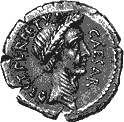
5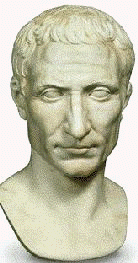
Julius Caesar
6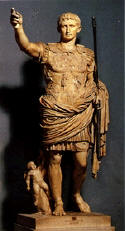
Augustus, or Octavian, brought
a time of peace to the Roman Empire, known as the "Pax Romana"
7
The emperor
Constantine made Christianity permissible
in the Roman Empire c. 313 A.D.
Roman Architecture
The Romans were excellent builders
who borrowed heavily from Greek styles.
8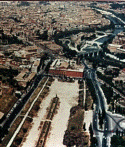
Circus Maximus - where the
citizens would go to watch chariot races
9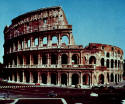
Colosseum - where the citizens
would go to watch gladiators battle
10
11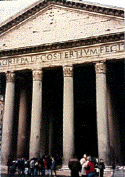
Pantheon - a temple dedicated
to all of the Roman gods (Jupiter, Juno, Venus, Mars, Mercury, Minerva,
Saturn, Neptune, Pluto, etc.)
|








